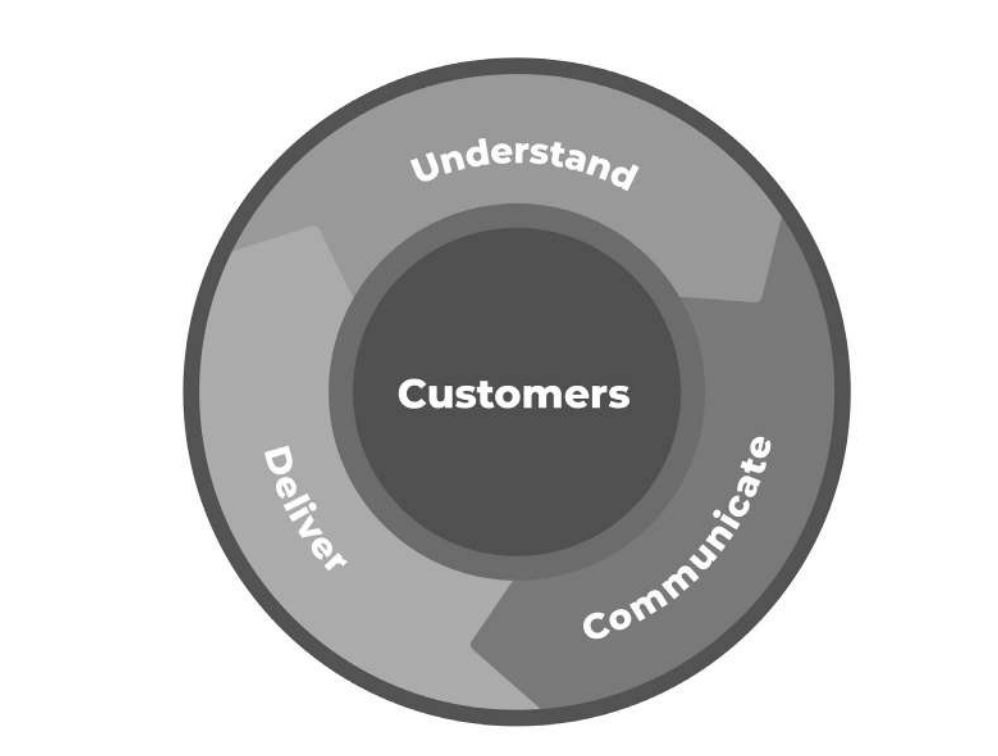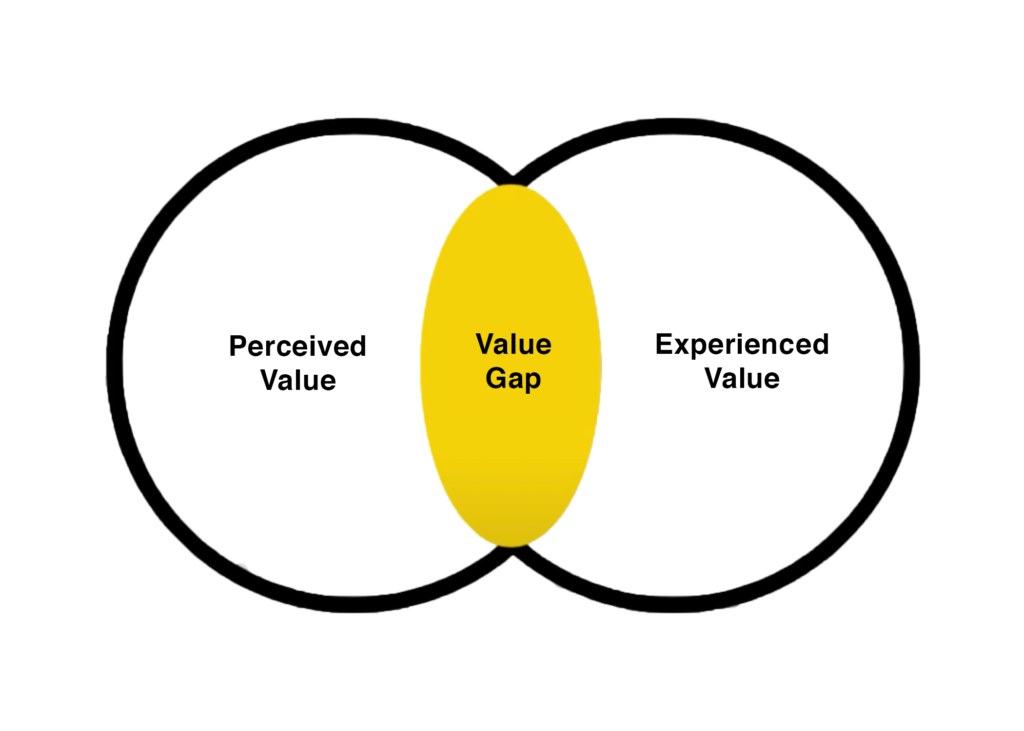
How to build a product that sells itself

If you’ve ever sampled a perfume before buying the bottle, taken a car for a test drive before signing the paperwork, or savored a wine tasting before stocking your basket, you’ve experienced the power of product-led growth.
Though the term often brings to mind SaaS heavyweights like Slack, Atlassian and Shopify, the principles at its core are quite simple:
Product-led growth is a go-to-market strategy that relies on using your product as the main vehicle to acquire, activate, and retain customers.
While sales-led growth relies on a more traditional sales cycle to lead buyers from ‘A’ to ‘B’, product-led growth engages every team across your business to lead with product. In a way, it’s the SaaS equivalent to the “try before you buy” philosophy we’ve all experienced countless times as consumers.
And if it feels like it’s everywhere these days, that’s because it is. Tidal waves like rising growth costs for startups, as well as buyers—more often end users themselves—who prefer to self-educate are driving the proliferation of product-led growth. According to Blake Bartlett, a partner at OpenView, “Product-led growth will soon become the norm, making it table stakes for SaaS companies that want to win in their markets.”
In my work as a speaker, author, and consultant, I’ve seen first hand how companies that employ this model are able to scale faster thanks to a wider top-of-funnel, and more cheaply thanks to lower customer acquisition costs.
Why is that?
Because their users are able to experience the value of the product on their own terms, feeding a powerful cycle of awareness, growth, and ultimately, trust.

Below, I break down how to build a product-led foundation at any stage—whether you want to launch a product-led startup, or build a stronger product-led business—using my UCD framework (Understand, Communicate, and Deliver). Let’s dive in!
Understanding the value of your product
Building a product-led foundation starts with finding the answer to this fundamental question:
What outcome do people expect when they buy your product?
It can be tempting to think we sell products based on the functional need they fulfill, or the tasks they allow businesses to complete (i.e., “we sell marketing automation software, and businesses need marketing automation!”).
But until you know what your users are trying to accomplish in your product, you’ll lead them to mountaintops they never wanted to climb.
To be successful with the product-led model, you need to understand the three reasons people buy your product:
- Functional outcome: the core tasks that users want to get done. Most companies can pinpoint this. For an ad-based platform, this could be acquiring leads that turn into customers. For a business intelligence tool, this could be understanding your business’ core KPIs.
- Emotional outcome: how customers want to feel (or avoid feeling) as a result of executing the core functional outcome. Here’s where it starts to get trickier. This could be a feeling of empowerment when you uncover business-building insights, or a feeling of accomplishment when you master your to-do list.
- Social outcome: how customers want to be perceived by others by using your product. Ever dropped a link to a beautiful dashboard in Slack and been met with awe by colleagues? An understanding of your product’s social outcome—the most often overlooked of the three—separates good products from great ones.
But how can you really know what customers do in your product, let alone how they feel or want to be perceived by using it?
This leads us to the next part of understanding the value of your product: the way you measure value exchange in your product, or your product’s ‘value metric’.
In every software product, there are usage patterns that point us toward the core outcomes that are important to your customers. Product-led companies continually track and monitor these usage patterns to understand whether users are accomplishing what they set out to.
When directly aligned with your revenue model, value metrics are the linchpin to successfully executing a product-led go-to-market strategy.
A good value metric is (1) easy for the customer to understand; (2) aligned with the value they receive in the product; and (3) grows with the customer’s usage of that value. For example:
- Wistia →number of videos uploaded
- Slack →number of messages sent
- PayPal →amount of revenue generated
There are a few different ways to find your company’s value metric, but the best approach will combine intuition and data. As a well-rounded product leader, it’s likely that you already have a hypothesis about your product’s value based on your understanding of the product, your customers, and the world. Don’t discount that.
But layering in a data-driven approach will help you validate your hypothesis and ensure that the story you’re telling is rooted in reality.
To get meaningful insights from your product data, I always advise teams to play around with user segmentation to help them identify the patterns among their ‘best’ and ‘worst’ customers. Ask: how does the journey of my most loyal users differ from that of those who churned?
With a solid understanding of what motivates people to purchase your product (and how to measure it effectively), you’re well on your way to building a product-led foundation.
Now, it’s time to spread the word.
Communicating the perceived value of your product
A key differentiator of product-led businesses is that their revenue model and customer acquisition model are married together.
While sales-led businesses rely heavily on relationships to sell large contracts, product-led companies lead with—you guessed it—their product. This means that if they’re serving up an experience that’s mediocre, they’ll feel an immediate impact on conversions and retention. And if their revenue model is misaligned or their pricing is confusing, the number of people signing up for their free trial or freemium plan will tank.
Which brings us to the most important tool that a product-led company has when it comes to communicating the value of their product: their pricing page.
Rather than hiding it behind closed doors, product-led companies eliminate unnecessary friction for SaaS buyers with up-front pricing for most starter plans.
For teams transitioning their pricing page from sales-led to product-led, there are three pieces of advice I like to give:
- Don’t overcomplicate it. It should be able to pass the 5-second test (i.e. users understand which plan is right for them almost immediately).
- Don’t create a free plan with no incentive to upgrade. You’re not running a charity. Dig into product data to inform your tiering strategy and strike the right balance.
- Don’t make it a no-brainer for the majority of your customers to downgrade. There’s no way to avoid this entirely, but remember that it’s ultimately a business tradeoff. With a solid customer success strategy, not to mention a wider top-of-funnel, you should expect to see increased product adoption in the future.
But even if you do everything right with your pricing page, it’ll fall flat if your understanding of what customers are willing to pay is misaligned. Since pricing is such an integral part of your product’s trajectory, it’s worth taking the time to get it right. There are a couple of ways to figure out what your product is really worth to customers, including economic value analysis, and—the more accurate choice if you have the customer base for it—market and economic research.
Whichever you choose, please don’t assume that your competitors have taken the time to do their research, and please, please, don’t guess.
Finally, remember the value metric we talked about earlier? Make it the star of your pricing page. Whether it’s ‘videos uploaded’ or ‘messages sent’, your pricing page should nudge would-be users towards the core outcomes you want them to achieve in your product.
Delivering on what you promise
To be successful with product-led growth, the perceived value of your product (driven by marketing and sales) needs to align with the experienced value of your product (driven by…the product!). The bigger the value gap between the two, the leakier your funnel.

Think about it: when something we sign up for does exactly what we envision, we’re happy. And when companies keep their word about what they’ve promised they’ll deliver, they build trust.
This, of course, is easier said than done. One of the biggest challenges that companies attempting to crush their value gap encounter is something I call time-to-value.
Consider your product’s onboarding flow. When someone tries your product for the first time, how long does it take for them to experience its value? For most B2B customers, the best answer to this question is as soon as possible.
When users fail to accomplish a key outcome in your product quickly, your product has a high ‘ability debt’. While some degree of ability debt is inevitable when launching a new product or freemium model, a good product leader will continuously look for ways to improve upon it.
Go through your product experience and ask yourself the following questions:
- Does the first product experience lead to a specific, relevant, meaningful “quick win”?
- Do tooltips and hotspots spur action in the product by reacting to where people are in their journey?
- Do social and directional cues (i.e. product tours, checklists, empty states) indicate high-value behaviors?
- Are key task completions indicated with a success state, such as Mailchimp’s famous high-five, or Asana’s flying unicorns?
- Are all unnecessary points of friction and distraction removed from critical workflows? Are there steps that can simply go away, or happen later?
If there’s one trait that the best product-led companies in the world share, it’s that they’re ruthless about reducing friction for their users.
Here’s an example:
An online photo editing tool I worked with was struggling with low conversion rates for plan upgrades. They dug into Mixpanel and discovered that a particular email activation step was causing a whopping 27% of signups to not go into the product. By eliminating this step, they were able to dramatically increase time-to-value, and—long-story-short—people began upgrading in droves.
Much of creating a straight-line path to value for users is about understanding the signals to look for within your data. When users take actions within your product, they’re sending signals to you about what outcome they want to achieve next (functional, emotional, and social). Respond with product messaging that meets them in their time of need.
For a product with a freemium model, the signals and corresponding responses might look something like this:
- Signup → welcome email → usage tip → quick win
- Quick win → usage tip #2 → better life → desired outcome
- Desired outcome → sales outreach → case study → trial expiry → trial extension → post-trial survey → customer → new customer campaign
As you can see, each customer journey builds upon the previous one, bringing the user deeper into the product—and closer to their desired outcome. And if you’ve followed the UCD framework correctly, their desired outcome is your value metric. Success for the user equals success for you.
And that, friends, is the key to a successful product-led business.
Understand the value of your product, communicate its value, and deliver on what you promise, and you’ll have built a product that sells itself.
By this point, you’ve probably gathered that I’m pretty passionate about product-led growth. You’ll find a lot more about the UCD framework, and related concepts like igniting your growth engine, in my book, Product Led Growth: How to Build a Product that Sells Itself.
About Wes Bush
Wes Bush is the founder and CEO of Product-Led Institute. He is the bestselling author of Product-Led Growth: How To Build a Product That Sells Itself and is one of the most sought-after product experts in the world. After working for some of the world’s fastest-growing companies in the world, today he runs a successful consulting business where he trains teams around the globe how to turn their product into a growth engine.






